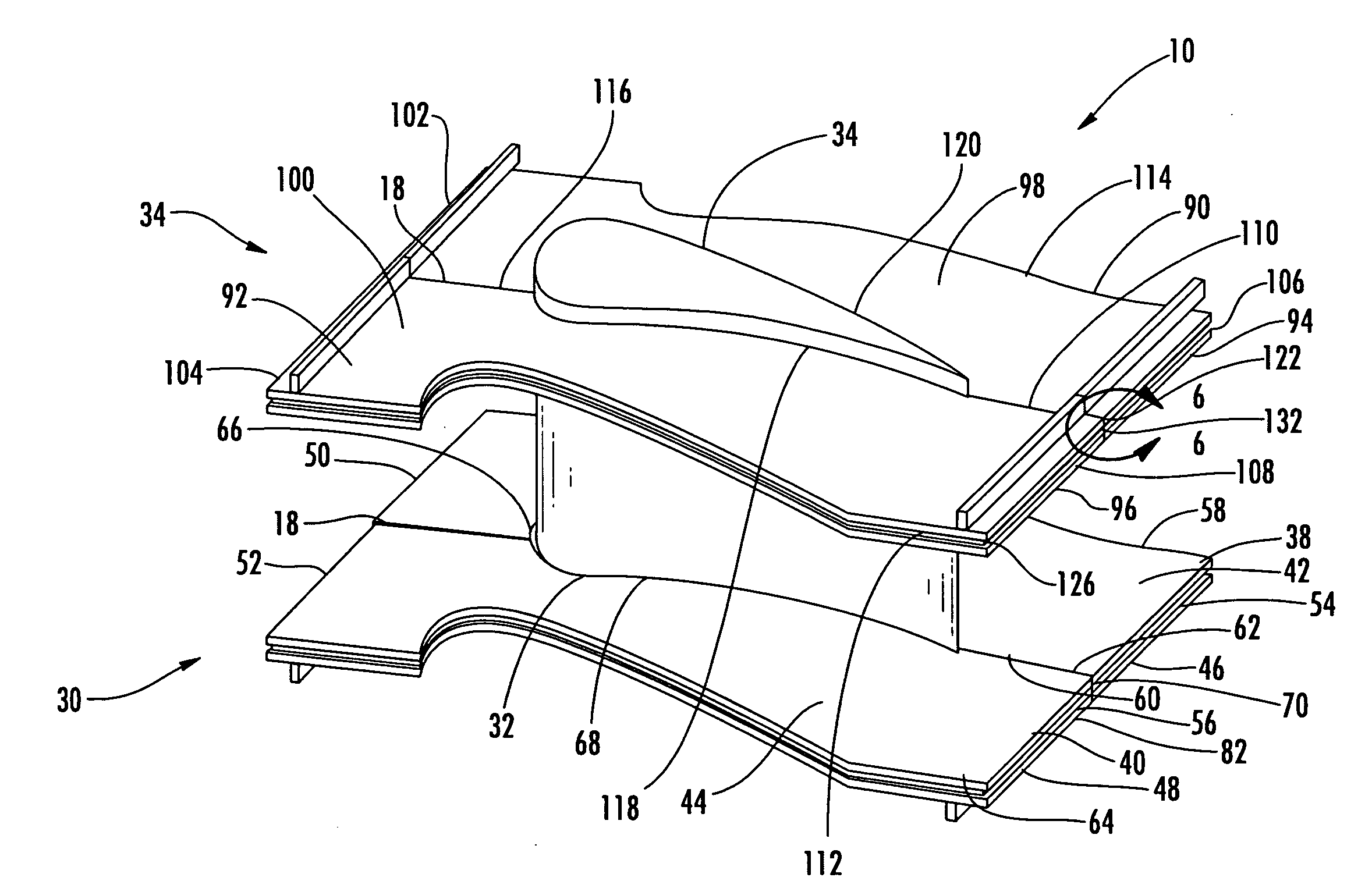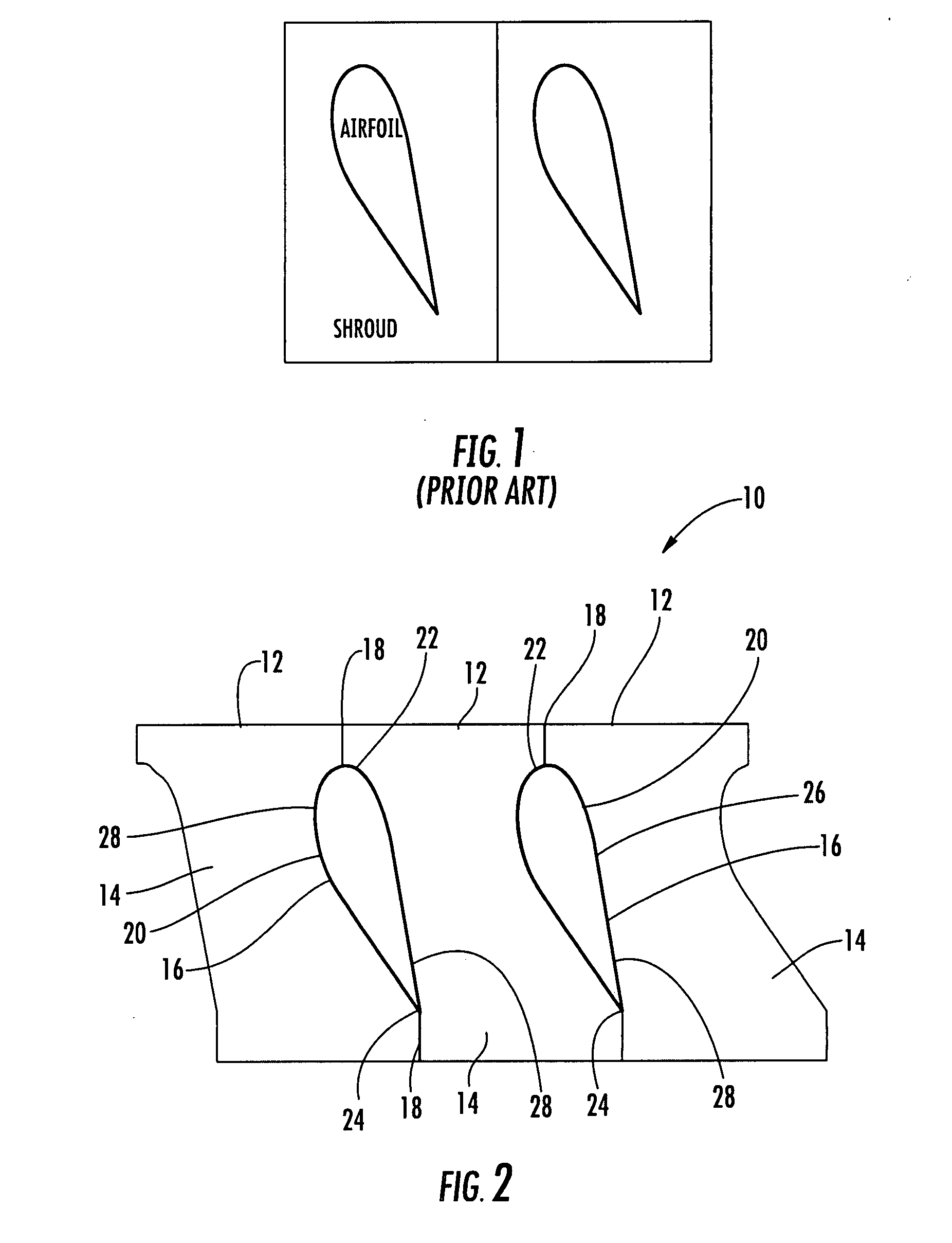Turbine vane with divided turbine vane platform
a technology of turbine vane and platform, which is applied in the direction of engine fuction, machine/engine, reaction engine, etc., can solve the problems of affecting the efficiency of the turbine engine, leaking cooling fluid through these joints, and not providing significant benefits to the normal operation of cooling fluid leakag
- Summary
- Abstract
- Description
- Claims
- Application Information
AI Technical Summary
Benefits of technology
Problems solved by technology
Method used
Image
Examples
Embodiment Construction
[0028]As shown in FIGS. 2-11, this invention is directed to a turbine vane 10 with endwalls 12 formed from two or more sections 14. The sections 14 may be configured such that the sections 14 form releasable joints 18 with a generally elongated airfoil 16 of the turbine vane 10 at the airfoil 16. The sections 14 may be configured 14 to both support the generally elongated airfoil 16 and to establish cooling fluid flowpaths between the sections 14 and the generally elongated airfoil 16 to cool the aspects of the turbine vane 10 proximate to the intersection of the endwalls 12 and the generally elongated airfoil 16. In addition, the joints 18 between the generally elongated airfoil 16 and the sections 14 may be formed from a connection system that enables forces to be transmitted from the generally elongated airfoil 16 to the endwalls 12 without creating stresses found in conventional turbine vane fillets at the intersection between the generally elongated airfoil 16 and the endwalls ...
PUM
 Login to View More
Login to View More Abstract
Description
Claims
Application Information
 Login to View More
Login to View More - R&D
- Intellectual Property
- Life Sciences
- Materials
- Tech Scout
- Unparalleled Data Quality
- Higher Quality Content
- 60% Fewer Hallucinations
Browse by: Latest US Patents, China's latest patents, Technical Efficacy Thesaurus, Application Domain, Technology Topic, Popular Technical Reports.
© 2025 PatSnap. All rights reserved.Legal|Privacy policy|Modern Slavery Act Transparency Statement|Sitemap|About US| Contact US: help@patsnap.com



